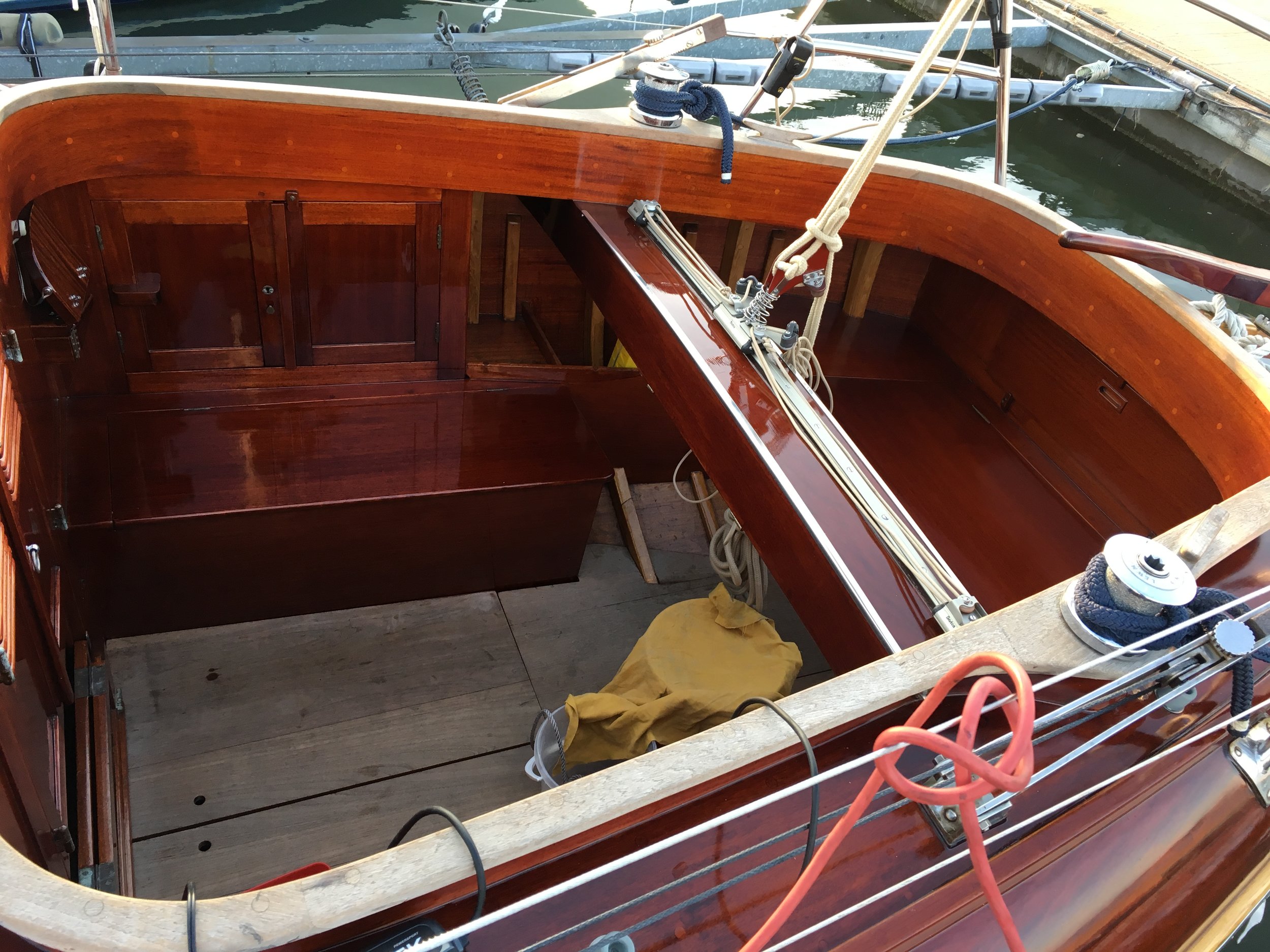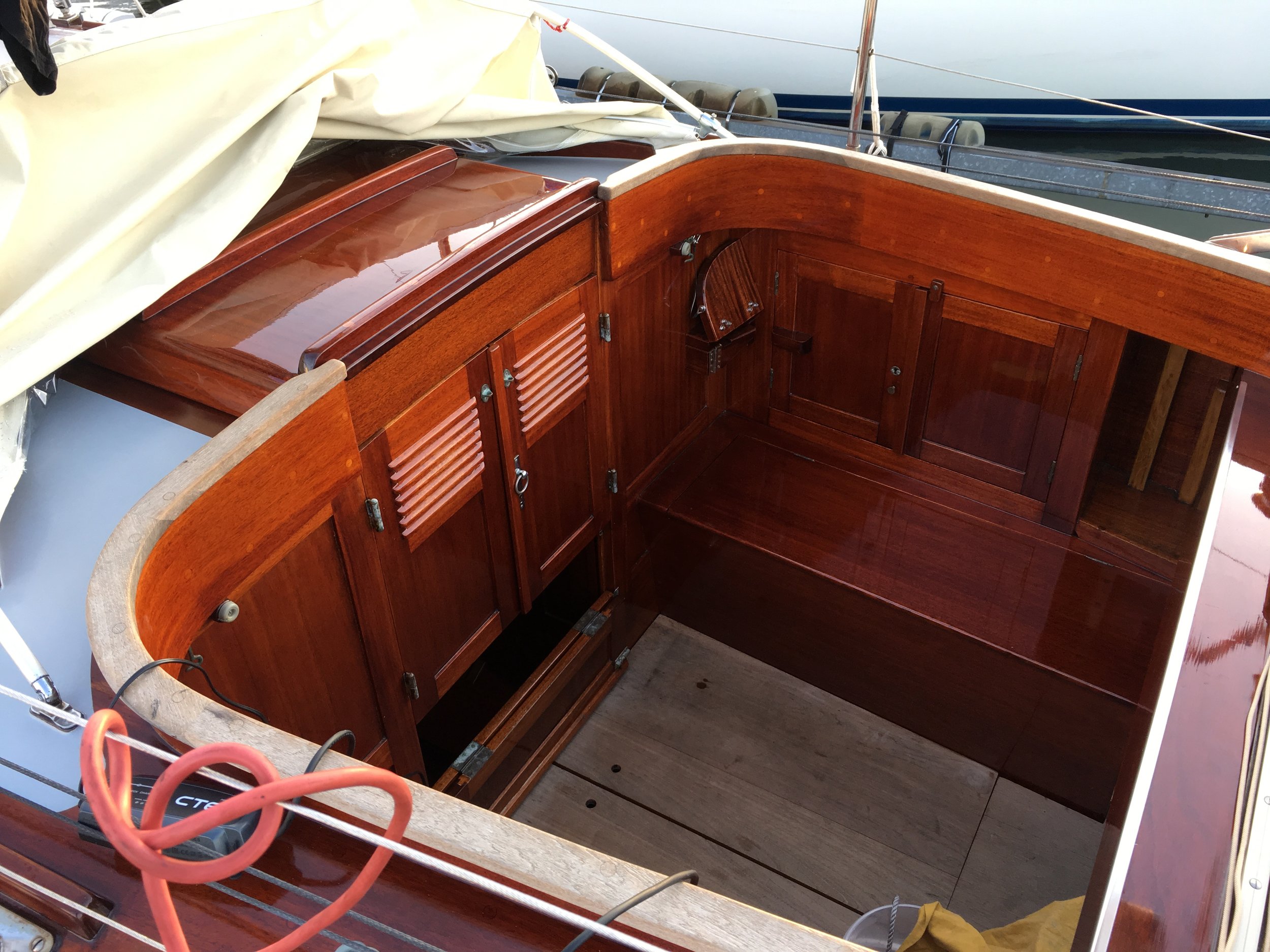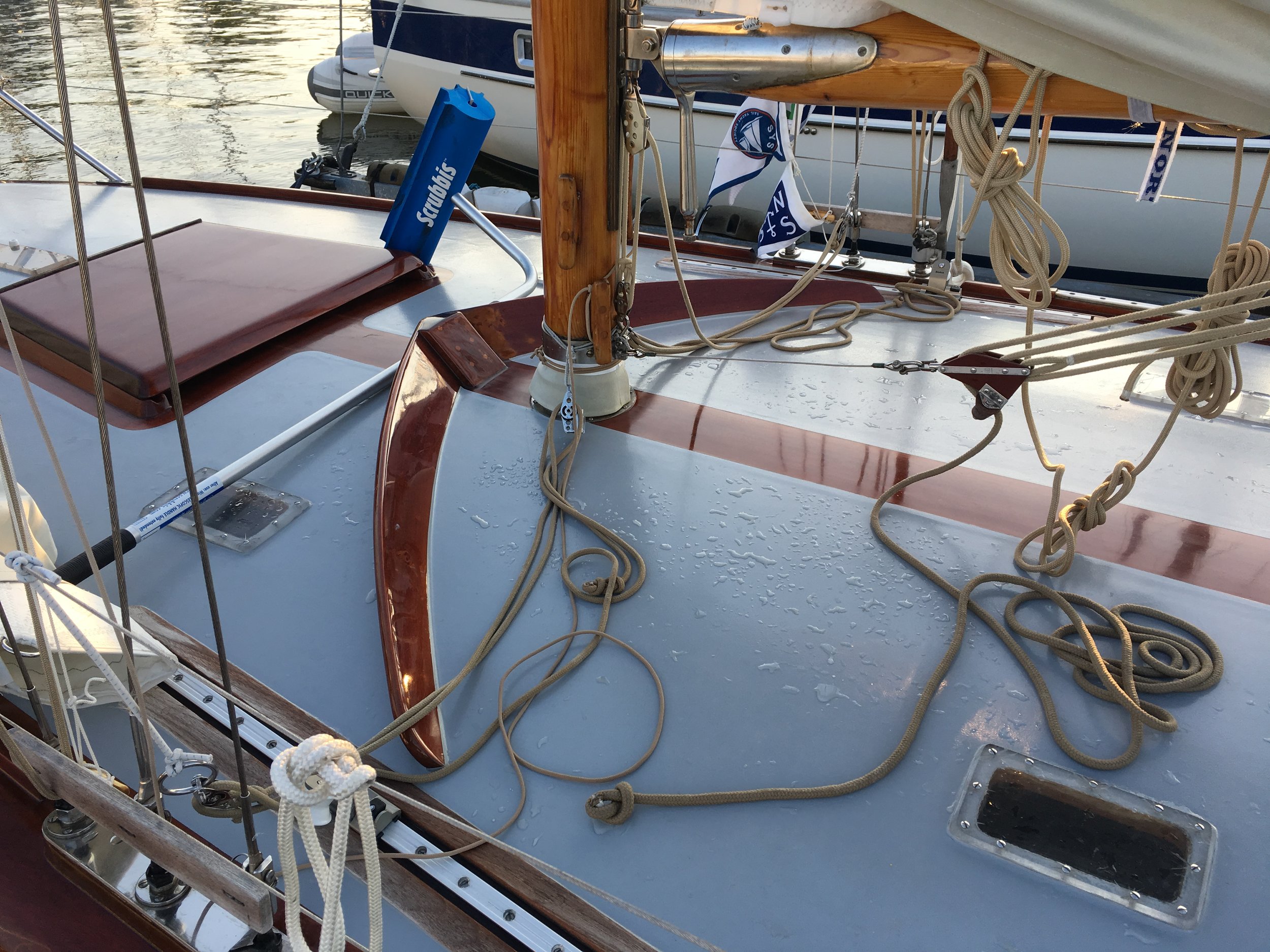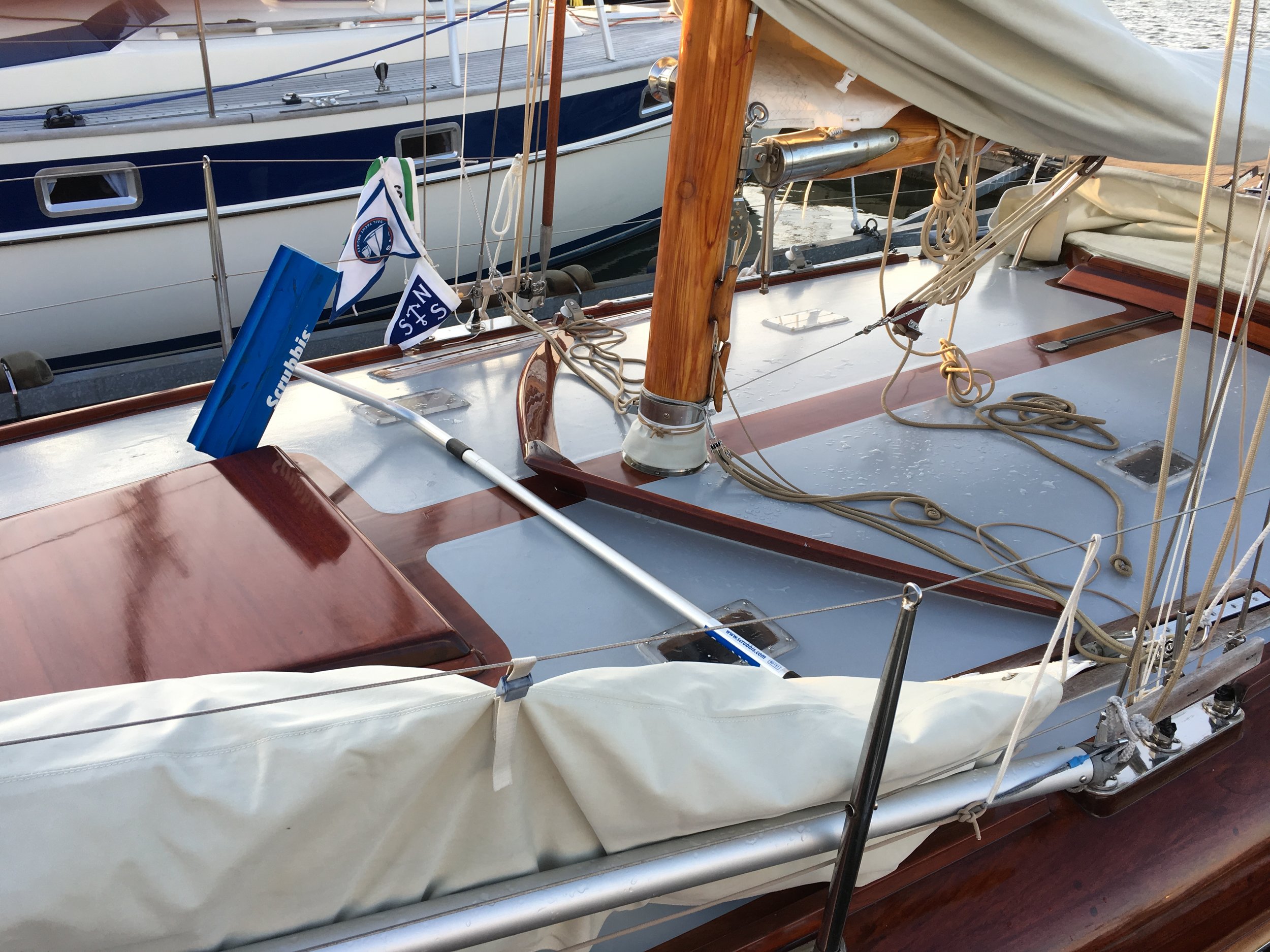Laurinkoster in perfect condition
I’ve spotted her in our club-harbour. Normally she is fully covered with hamn-kapell, to protect her from sunlight, rain and birds’ crap. Tonight I found her uncovered and ready for departure - her owners will sail tomorrow morning.
I’ve seen her in a magazine few years ago. This is also Laurinkoster 28 feet but with no deck house. This makes her very sleek and flush decked.
Contrary to my boat she has a partial rig - more flexible regarding shaping the sail and suited better to racing - at the cost of some more complexity to handle during sailing. I had this type of rig on Motoko and I’m more happy with my current mast-head configuration but sail shaping is much more limitted.
Although I did not manage to meet her owners I took this opportunity to closely inspect her from outside.
The finish on freeboard is perfect and mahogany is beautifully stained to dark, Honduras-mahogany tone. I noticed that in the past she suffered the same problem which now I have on Meritaten - valdeck planks shrink from sun heat and gaps open-up between them, causing rain water to enter the hull. The reason is that original glue Cascofen which was used 60 years ago is now loosing it’s integrity and planks are no longer restrained from separation each other on summer heat.'
The only reasonable way to mitigate that is to edge-glue them again, with strips of mahogany installed in routed-out space between the planks. This boat was repaired this way so now her roundd valdeck is again water-tide and beautiful.
Unlike Meritaten this boat has no internal engine but instead a small outboard mounted cleverly on a custom-made fixture. The boat is used mainly for racing as I got to know so weight savings are visible everywhere. Standing rig is of much thinner wires than I have on Meritaten, Tufinol blocks are smaller than mine and main sail traveller is one size smaller than on my boat. As both boats are 28 feet long the owner of this boat chose to use fittings scaled “up to 28 feet”, to save weight while I chose “from 28 feet up” to have strength margin and accepting weight penalty.
To each it’s own, this boat looks very well with these tiny fittings.
Her deep and spacious cockpit looks very comfortable. Mainsail traveller is supported by huge beam with shelves for compass, maps and necessities during sailing. It seems there is no hund-koj on her as cockpit is fully open but instead there are many small cupboards and chests to store sailing equipment.
Looking onto visible ribs I conclude that she is fastened with screws rather than copper rivets like on Meritaten, characteristic to Rosättra builds.
The level of finish is superb, no wonder she is kept under cover most of the time.
Her slush deck is beautiful. It is the same as on the first ever Laurinkoster “Monsun” which was designed by Arvid Laurin for crossing the Atlantic. At that time some sailors, like Polish captain Krzysztof Baranowski on yacht Polonez, were afraid that waves can destroy the deck house - as it happened to Chichester - so they opted for no deck house and deep cockpit instead. This is scarifying comfort under the deck - no standing possible - but seems safer as the boat is not presenting any obstacle to huge masses of water which can enter the deck during bad weather.
Due to no deck house the only structure which can break and divert water on the deck is a small “V” in front of the mast.
It is a joy to study such a beautiful boat. I hope I’ll be able to see her inside some day. Until then I keep admiring her perfect finish and smart solutions on the deck and the way the outboard is mounted.












